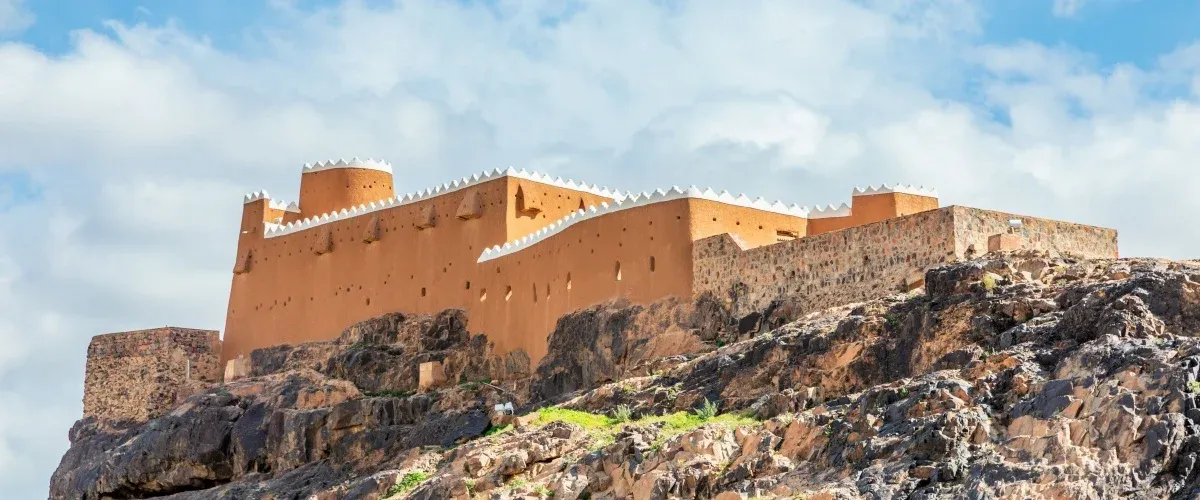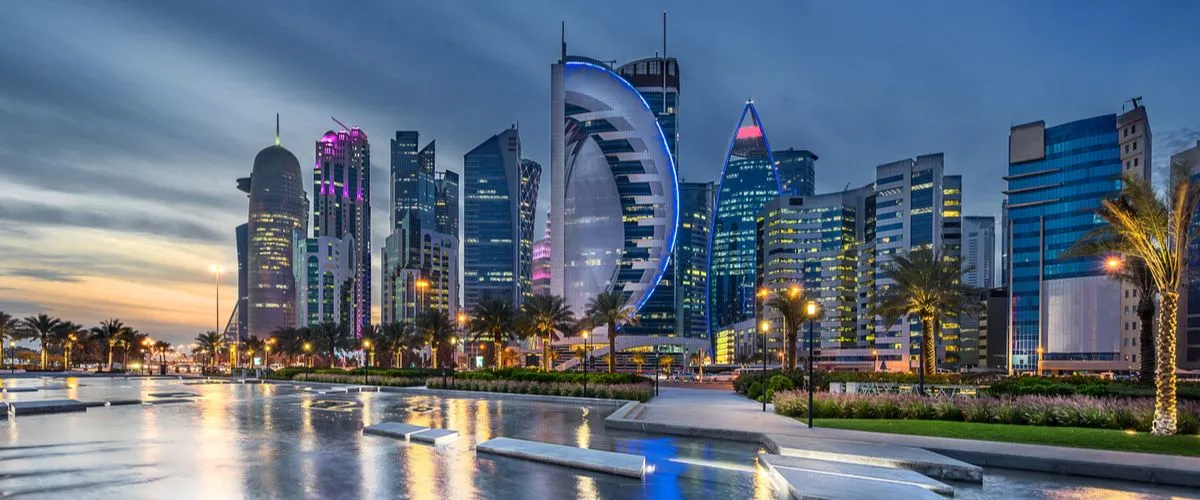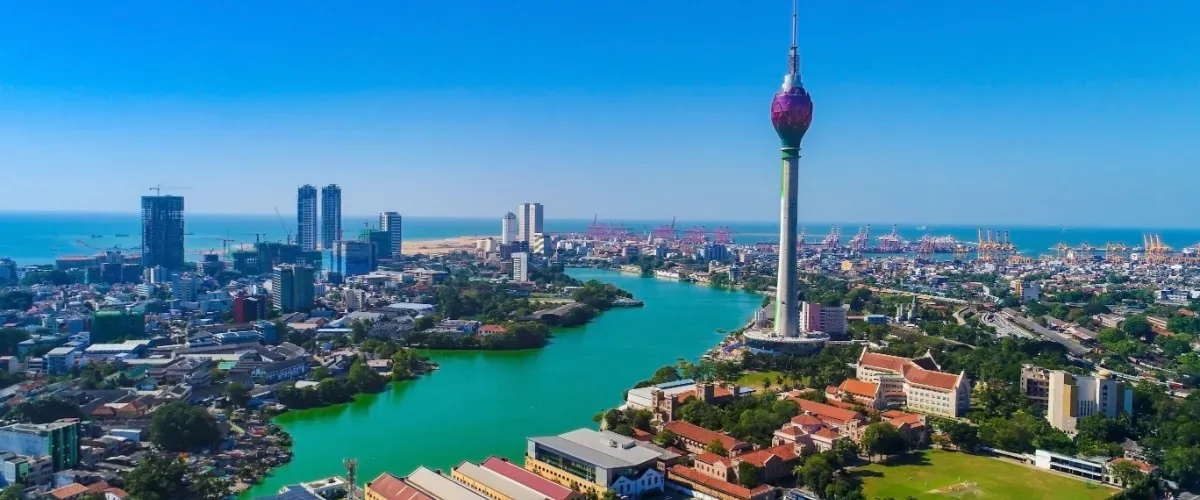Egypt is a land of wonders and treasures of history. It’s known for its rich and fascinating past. The place Unfold the secrets of pristine beaches, vibrant coral reefs, and cultural richness. Egypt’s history is like an exciting storybook that unfolds over thousands of years. It is a tale of mighty kings and queens, grand temples, and the place where the earliest civilization started. And the great thing Egypt has preserved all these things in the museum. Now, explore the best museums in Egypt that will untangle all your doubts!
Top Museums in Egypt: Journey Through Time
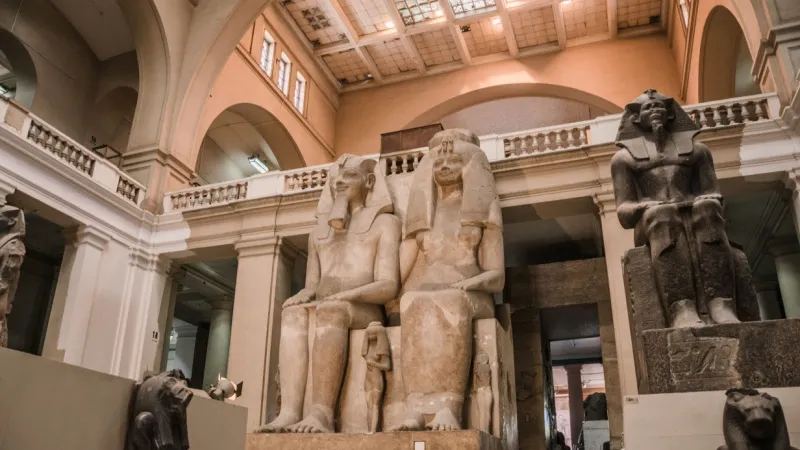
Explore the wonders of Egypt's history with a guide to the top 10 museums in Egypt. From the famous Egyptian Museum in Cairo to the unique Nubian Museum, each place reveals a part of Egypt's rich past. Now, explore stories behind ancient artifacts, geological marvels, and royal treasures. These museums are like portals to another time, inviting you to be part of Egypt's fascinating history.
- The Egyptian Museum Cairo
- Egyptian Geology Museum
- The National Museum of Egyptian Civilization
- The Coptic Museum
- Abdeen Palace Museum
- Graeco-Roman Museum Alexandria
- Prince Mohamed Ali Palace
- The Grand Egyptian Museum
- Nubian Museum
- Mummification Museum
1. The Egyptian Museum Cairo: Unlocking Egypt's Ancient Mysteries
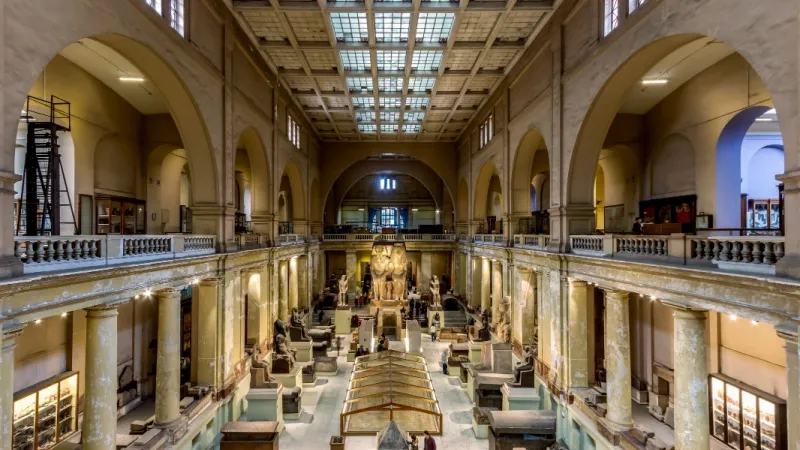
The Egyptian Museum in Cairo is the first national museum in the Middle East. The museum is situated in the heart of Cairo’s Tahrir Square. This also stands out with its distinctive design and has the world’s oldest collection of Pharaonic art and monuments. It has over 100 exhibition halls. The museum holds immense scientific significance, housing the world’s largest ancient Egyptian collection. From prehistory to the Graeco-Roman era, the museum showcases numerous collections. It also exhibits ancient Egypt’s influence on historical civilizations.
Highlights:
- There are 2 floors in the museum, and it's filled with almost 120,000 items
- Make sure not to miss out on Mask of Tutankhamun
- You can also find the first document around the globe, the Narmer Palette. This shows the merging of lower and upper Egypt.
Address: El-Tahrir Square, Ismailia, Qasr El Nil, Cairo Governorate 4272083, Egypt
Timings: 09:00 A.M- 05:00 P.M
Nearby Attractions: The Egyptian Museum, Abdeen Palace Museum, Gayer-Anderson Museum, Baron Empain Palace, Aisha Fahmy Palace, Pharaonic Village, Umm Kulthum Museum, and National Military Museum Egypt
2. Egyptian Geology Museum: Rocks, Minerals, and Fossils Unveiled
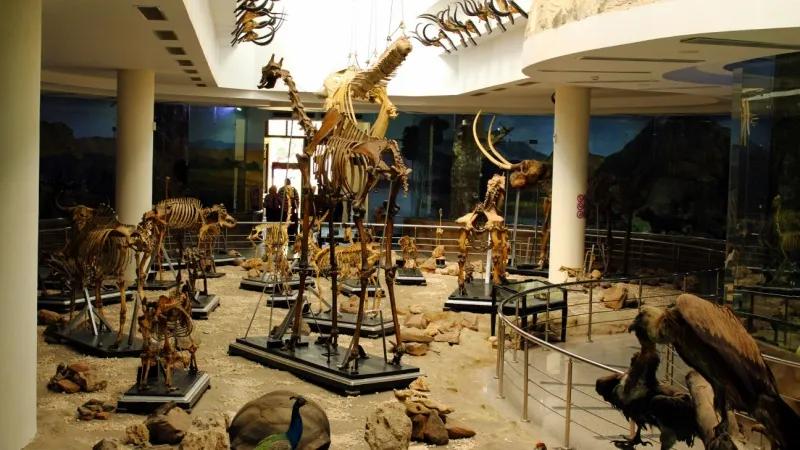
Established in 1904 as part of the Egyptian Geological Survey, the Egyptian Geological Museum (EGM) showcases the rich geological history of Egypt. Pioneers in metal and stone extraction, Egyptians were the first to discover and mine gold and copper in the Eastern Desert and Sinai. The Egyptian Geological Museum, featuring over 100 years of expertise, highlights Egypt's geological journey through fauna, flora, and unique collections like Fayoum vertebrate fossils and meteorites. Collaborating with international institutions, it contributes to scientific research and plays a vital role in public education on earth sciences.
Highlights:
- Explore numerous exhibits which are of real life-sizes.
- The museum also shows you different preserved animals and also there are numerous skeletons of creatures that are living and extinct
- It also showcases minerals, and rocks and through well-arranged displays.
Address: Athar an Nabi, Old Cairo, Cairo Governorate X6WH+HH2, Egypt
Timings: 09:00 A.M- 02:00 P.M (Sunday to Thursday), Closed on Friday and Saturday
Nearby Attractions: Amr ibn Al-A'as Masjid Jama, The Hanging Church, Pharaonic Village, Saints Sergius and Bacchus Church, The Coptic Museum, and The Egyptian Museum
Suggested Read: The Best Egypt Restaurants For An Amazing Gastronomic Journey
3. The National Museum of Egyptian Civilization: From Pharaohs to Present
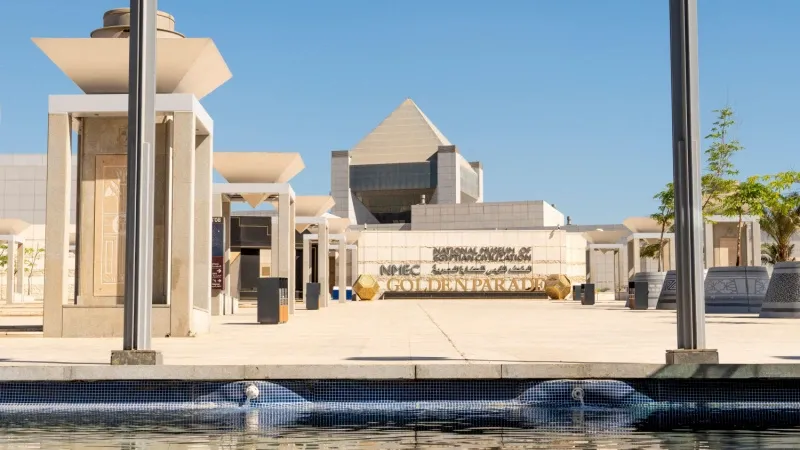
NMEC stands as the Arab world's first museum dedicated to the ancient Egyptian civilization, providing a comprehensive overview of Egypt's diverse historical periods. This is one of the best places to visit in Cairo. Located in Al-Fustat, the ancient Islamic capital, NMEC's multidisciplinary thematic approach shows Egypt's rich heritage, showcasing its cultural, educational, and research significance. Spanning Predynastic to contemporary times, the museum presents key historical phases, including Graeco-Roman, Coptic, and Islamic eras.
Highlights:
- This museum is house for some of the well preserved artefacts.
- The museum includes the Replica of the Rosetta Stone, mummy of Hatshepsut, and also a statue of Pharaoh Ramses II
Address: Ein as Seirah, Old Cairo, Cairo Governorate 4245001, Egypt
Timings: 09:00 A.M- 05:00 P.M (Saturday – Thursday)/ 09:00 AM- 05:00 PM, 6:00 P.M.- 09:00 P.M. (Friday)
Nearby Attractions: Khan el-Khalili, City of the Dead Cairo Egypt, The Cave Church, Baron Empain Palace, Museum of Islamic Art, Meidum Pyramid, Al-Azhar Park, and Pyramid of Djoser
Suggested Read: Restaurants in Cairo: From Arabian Hospitality to Egyptian Zest
4. The Coptic Museum: Preserving Faith and Heritage
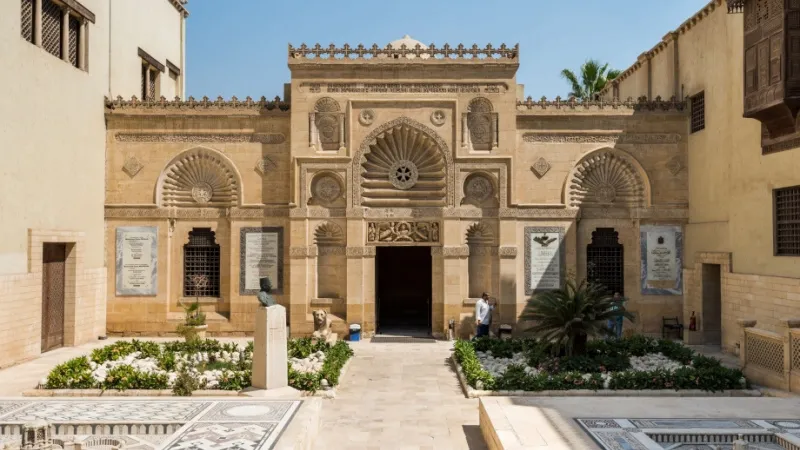
The Coptic Museum steadily expanded through legacies and donations. The Service of Antiquities, in 1939, directed the relocation of Christian Antiquities from the Egyptian Museum to the Coptic Museum. Showcasing funerary stelae from Kom Abou Billou, dating from the 2nd to 5th century, the museum reflects the transition between Pharaonic and Coptic art, symbolizing resurrection. The Coptic community actively contributes, donating icons, manuscripts, garments, frescoes, and artifacts, creating a comprehensive tapestry of Egypt's rich cultural heritage.
Highlights:
- The museum gives you an idea about the Christian history.
- This museum has the largest number of Coptic antiquities in the world.
- Morcos Simika Pasha collected Coptic antiquities and different elements from old churches.
Address: 3 Mari Gerges, Kom Ghorab, Old Cairo, Cairo Governorate 4244001, Egypt
Timings: 09:00 A.M.- 05:00 P.M.
Nearby Attractions: The Hanging Church, Saints Sergius and Bacchus Church, Great Sphinx of Giza, The National Museum of Egyptian Civilization, Pharaonic Village, and Museum of Islamic Art in Cairo
5. Abdeen Palace Museum: A Glimpse into Royalty
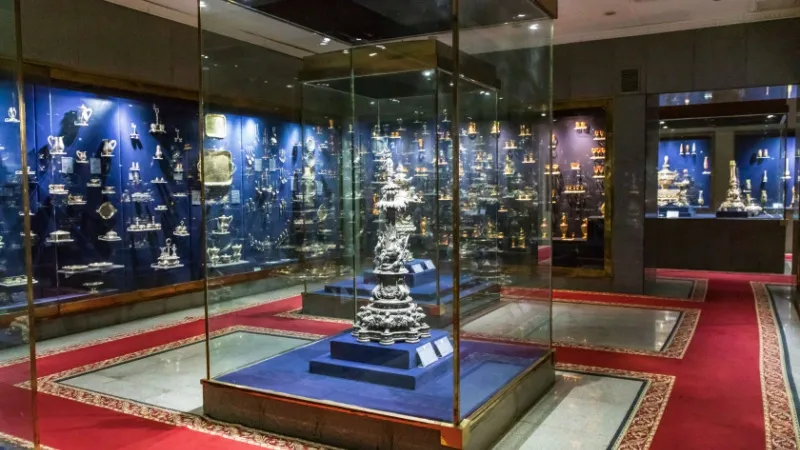
In Egypt, a legacy of royal museums, initiated by Mohammad Ali Pasha and his lineage. Abdeen Palace Museum Cairo comprises two floors, featuring haramlik, salamlik, gardens, a pharmacy, and a printing house. The palace houses five unique museums: War Museum, Presidential Gifts Museum, Royal Museum, Historical Documents Museum, and Silverware Museum. Each museum offers a glimpse into Egypt's rich history, presenting weaponry, presidential gifts, royal artifacts, historical documents, and silverware antiques from Mohamed Ali's family.
Highlights:
- The name came after Abdeen Bey. He was one of the military commanders of Mohammad Ali Pasha.
- Abdeen Palace is a model of European architecture in Egypt.
- The palace was designed by Rousseau, famous French architect and this resembles European Palace.
Address: 26VW+7VP, Gomaa Abdeen Street, El-Gomhoreya Square, Rahbet Abdin, Abdeen, Cairo Governorate, Egypt
Timings: 09:00 A.M. - 03:00 P.M., Closed on Friday
Nearby Attractions: Giza Necropolis, Prince Mohamed Ali Palace (Al Manial Palace), Ibn Tulun Mosque, Talaat Harb Square, Museum of Islamic Art, and Al-Azhar Mosque
Suggested Read: Malls in Egypt: Plan Your Trip For A Day of Fun
6. Graeco-Roman Museum Alexandria: Unveiling Alexandria's Greco-Roman Legacy
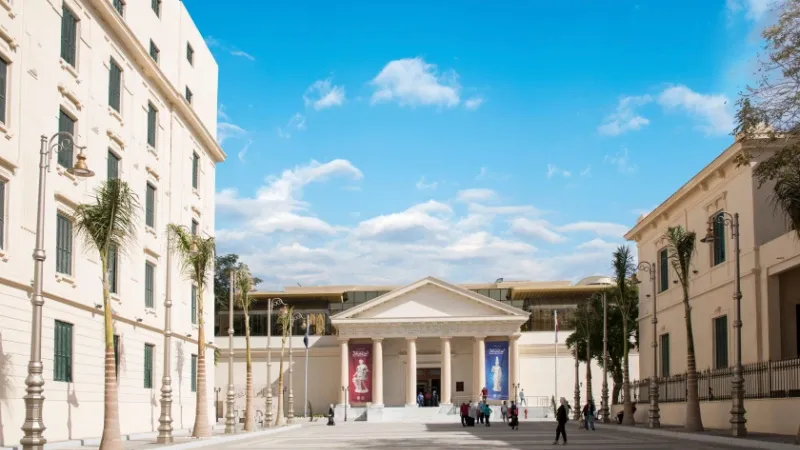
The Graeco-Roman Museum Alexandria was first established in 1892 on Horreya Road. Later, in 1895 it moved to its current location near Gamal Abdul Nasser Road. Starting it was eleven galleries and later on it was extended to 25 galleries and is one of the best places to visit in Alexandria. It has a wide variety of coins and this spans from 630 BC to the Ottoman period in the 19th century. This will offer a chronological journey through various countries. The Alexandria Graeco Roman Museum showcases the cultural shift from pagan beliefs to Christianity through mummies, Hellenistic statues, Roman emperors' busts, Tangara figurines, and early Christian antiquities.
Highlights:
- You can see a huge variety of coins from different countries.
- It’s arranged in such a way that it dates back from 630 BC to the Ottoman period in the 19th century.
- The museum consists of numerous items which was found in Alexandria itself.
Address: Al Mesallah Sharq, Al Attarin, Alexandria Governorate 5372053, Egypt
Timings: 09:00 A.M.- 05:00 P.M.
Nearby Attractions: Alexandria Bibliotheca, Alexandria National Museum, Citadel of Qaitbay, Serapeum of Alexandria, Catacombs of Kom el Shoqafa, and Ancient Roman Theater
Suggested Read: Top Beaches in Egypt: Rejuvenate in the Hypnotic Charm of Nature for a Blissful Holiday
7. Prince Mohamed Ali Palace: The Timeless Elegance
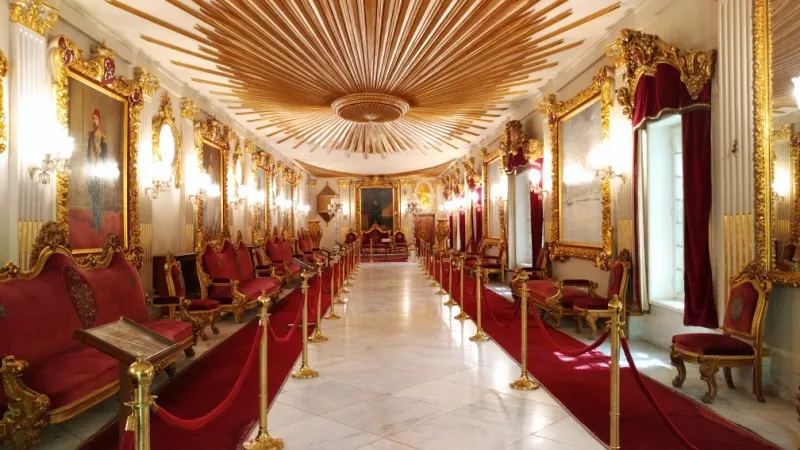
The Manial Palace Museum Cairo, both a museum and former residence of Prince Mohamed Ali, stands as a captivating testament to Egypt's history. This is one of the best places to visit in Egypt. Constructed between 1899 and 1929, during Prince Mohamed Ali's reign, it reflects the architectural charm of late 19th-century Egyptian royalty. After Prince Mohamed Ali's death, the palace transformed into a museum in 1952, offering the public a glimpse into royal extravagance. The museum showcases a diverse collection of artifacts, including art, silver, and clothing. The expansive gardens feature exotic plants acquired globally.
Highlights:
- The palace's expansive gardens cover approximately 34 acres and feature a stunning array of plants and trees collected by Prince Mohamed Ali from around the world.
- The Manial Palace Museum houses a diverse collection of artifacts, including artworks, silverware, clothing, texts, drawings, gems, and candlesticks.
- Originally constructed by Prince Mohamed Ali Pasha, the palace was later preserved as a museum, allowing the public to glimpse the opulence and grandeur of royal life.
Address: 1 Al Saraya, Old Cairo, Cairo Governorate 4240291, Egypt
Timings: 09:00 A.M.- 04:00 P.M.
Nearby Attractions: The Egyptian Museum in Cairo, The National Museum of Egyptian Civilization, Al-Azhar Park, Al-Azhar Mosque, Giza Necropolis, and Amr ibn Al-A'as Masjid Jama
Suggested Read: Honeymoon in Egypt: For Unforgettable Memories With Your Loved One
8. The Grand Egyptian Museum: A Monument to Egypt's Splendor
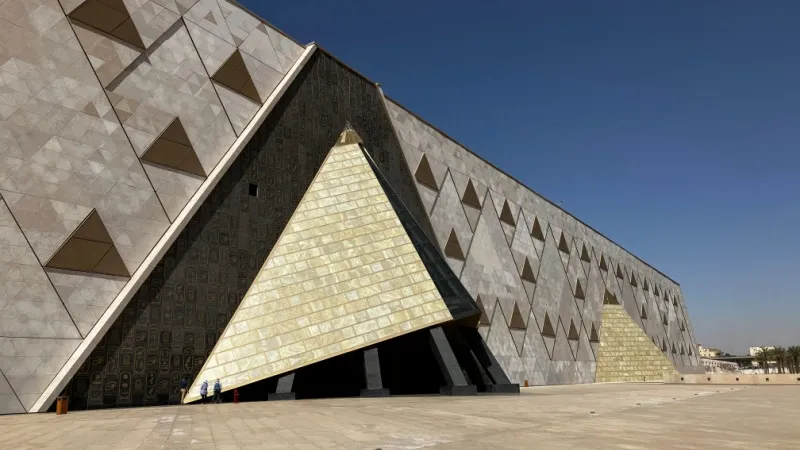
The Grand Egyptian Museum (GEM), situated in Giza, Egypt, stands as a colossal repository of archaeological treasures spanning Egypt's rich history from the predynastic era to the Greco-Roman period (c. 3100 BCE to 400 CE). Encompassing artifacts from various cultural institutions, including the renowned Egyptian Museum in Cairo, the Egyptian Grand Museum boasts the largest collection globally. The Grand Egyptian Museum GEM is world's largest archaeological museum. Its construction involved an international design competition in 2002, and it became a hub for relocated artifacts, notably those from Tutankhamun's tomb. And, this is also the new Egyptian museum.
Highlights:
- The GEM houses artifacts from thousands of years of human civilization.
- The center of attraction of the museum is items which were discovered in the tomb of King Tutankhamun.
- There are food court, restaurants, conference center, outdoor gardens and a 3D movie theatre.
Address: Kafr Nassar, Al Haram, Giza Governorate 3513204, Egypt
Timings: 09:00 A.M- 06:00 P.M.
Nearby Attractions: Great Sphinx of Giza, Giza Necropolis, Khan el-Khalili, Saqqara Necropolis, Salah Al-den Al-ayobi's Castle, Cairo Tower, and Pyramid of Djoser
Suggested Read: Nightlife in Egypt: Dance To The Sounds Of Music All Night Long
9. Nubian Museum: Discover the Treasures of Nubia
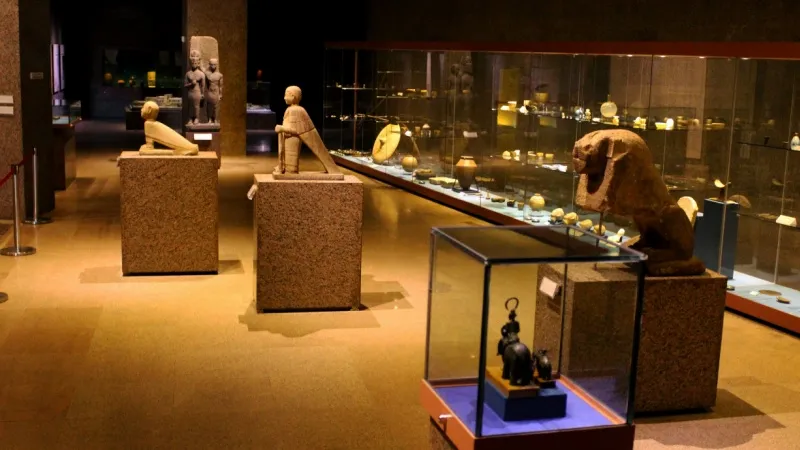
The Nubian Museum, recognized as one of Egypt's and the world's most stunning museums, earned the prestigious Aga Khan Prize for its exceptional architectural design in 2001 and therefore is one of the best places to visit in Aswan. Its creation was part of UNESCO's initiative to safeguard Nubian monuments from the impact of the High Dam construction. Featuring diverse artifacts spanning epochs, the museum showcases a remarkable 20,000-year-old human skeleton discovered in Aswan in 1982. Visitors can stroll in the museum's garden, enjoying the fresh air, historical statues, and artificial lakes symbolizing the Nile.
Highlights:
- You can also see some of the amazing statues of King Shabitko, Ramses II, Nubian rulers.
- Since ancient Nubian gave importance to animals, you can also see supplies and the ornaments used for horses.
- The museum showcases different periods and its influence on Nubian civilization. This includes Geological, Pharaonic, Roman, Coptic and Islamic.
Address: Assuan, Sheyakhah Oula, Aswan 1, Aswan Governorate 1240853, Egypt
Timings: 09:00 A.M.- 01:00 P.M, 05:00 P.M.- 09:00 P.M.
Nearby Attractions: Monastery of St. Simeon, The High Dam, Aswan Museum, Nile Museum, Aga Khan Mausoleum, Tempio di Khnum, and Nubian Village Aswan
Also Read: Top 8 Museums in Cairo: Discover the Ancient Era of Egypt
10. Mummification Museum: Preserving the Past
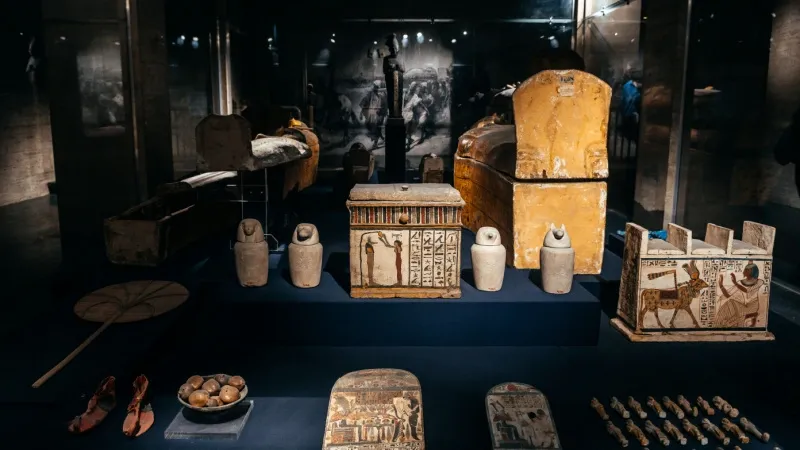
Situated north of Luxor Temple along the Nile Corniche, the Mummification Museum is a prominent Egyptian institution, dedicated to showcasing the ancient art of mummification. Opened in 1997, the museum aims to provide insights into the mummification process practiced by the ancient Egyptians. The wrapped body, adorned with magical amulets, was then placed in a coffin for burial. Mummification, guided by the god Anubis, aimed to ensure the preservation of the deceased's body for their journey into the afterlife. This ancient practice evolved over time, reaching its pinnacle during the New Kingdom Period. The museum serves as a gateway to understanding the cultural and spiritual significance of mummification in ancient Egypt. So, make sure to add this to your things to do in Egypt.
Highlights:
- The museum gives a proper knowledge on ancient art of mummification
- In the museum display, you can also see mummies of cats, crocodiles and fishes.
- It also displays the tools and materials that are used for the process of mummification.
Address: Kornish Al Nile Street, Luxor City, Luxor, Luxor Governorate 1362501, Egypt
Timings: 09:00 A.M.- 02:00 P.M, 05:00 P.M.- 10:00 P.M
Nearby Attractions: Luxor Temple, Karnak, The Sphinx Avenue, Temple of Thutmose III, Theban Necropolis, and Mortuary Temple of Amenhotep III
Suggested Read: Top Places to Visit in Giza: Popular Tourist Sites on Magnificent Nile
Egypt stands as a treasure trove of cultural heritage. Musuems in Egypt serve as windows into the rich tapestry of its history. Each museums offers a unique perspective on Egypt's past. As visitors traverse these diverse museums across Egypt, they find themselves not merely witnessing history but actively engaging in an immersive exploration of Egypt's cultural, historical, and geological legacy. The enchantment lies not only in the artifacts but in the stories, they tell, the civilizations they represent, and the vibrant threads that connect the past to the present. So, what are you waiting for? With our Egypt tour packages immerse yourself in the rich history of Egypt.
Museums in Egypt FAQs
The museum shows the complete history of ancient Egypt, especially things from the time of the Pharaohs and Greco-Romans. On the first floor, there are big and heavy things, like giant statues placed in the middle of the main hall.
The Egyptian Museum is in a pink palace near Cairo's Tahrir Square. It has over 120,000 objects. The Bibliotheca Alexandrina is a new version of the old Library of Alexandria. It has four museums and many exhibits that stay there all the time.
You can visit some of the mesmerizing places like Luxor Temple, Karnak, The Sphinx Avenue, Temple of Thutmose III, Theban Necropolis, and Mortuary Temple of Amenhotep III
The biggest museum in Egypt is the Grand Egyptian Museum. It's the largest museum in the world that focuses on just one civilization. This museum is dedicated to showing many things about ancient Egypt, making it a really special place to learn and see incredible artifacts.
The oldest museum in Egypt is the Egyptian Museum, found right in the middle of Tahrir Square in Cairo. It's a special building made to hold the world's first collection of Pharaonic art and monuments.
King Tut's mask was taken out of the tomb in December 1925. They put it in a box and moved it 635 kilometers to the Egyptian Museum in Cairo. Now, you can see it there for everyone to look at.
Inside the Egypt museum, there are more than 100,000 things from ancient Egypt. This includes everything from Tutankhamun's collection, and some of these things have never been shown before. The museum is really big, with 81,000 square meters of space, making it the largest archaeological museum in the world.
Established in 1904, the Egyptian Geological Museum showcases Egypt's rich geological history, featuring real-life-sized exhibits, preserved animals, skeletons of living and extinct creatures, minerals, rocks, and well-arranged displays. It provides insights into Egypt's pioneering role in metal and stone extraction.

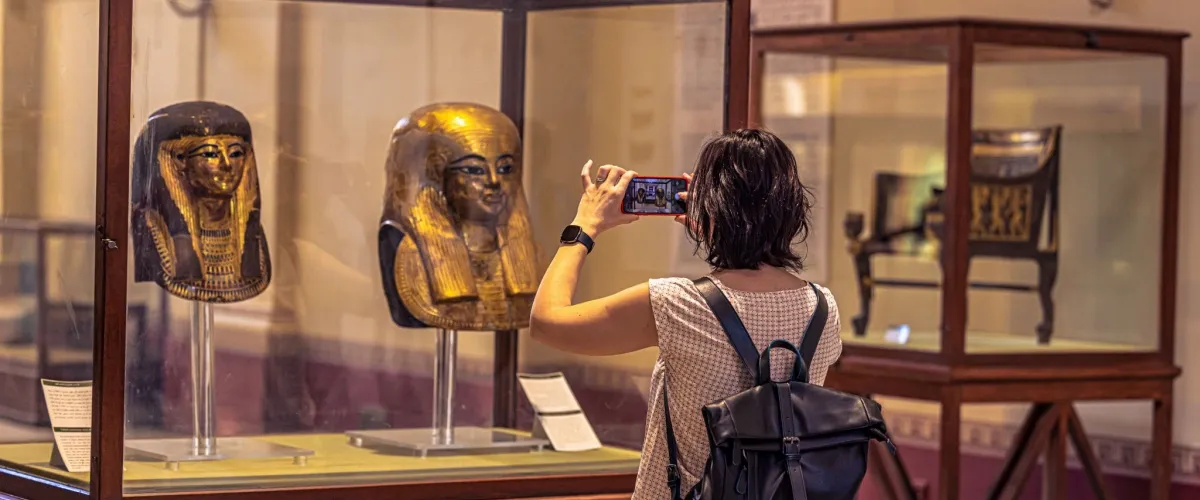


.webp)
.webp)
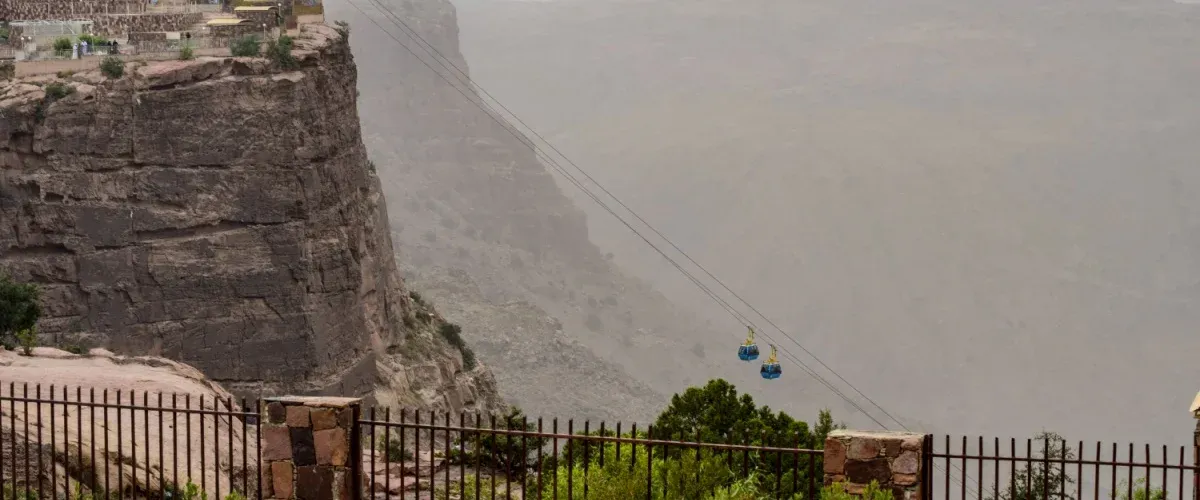
.webp)

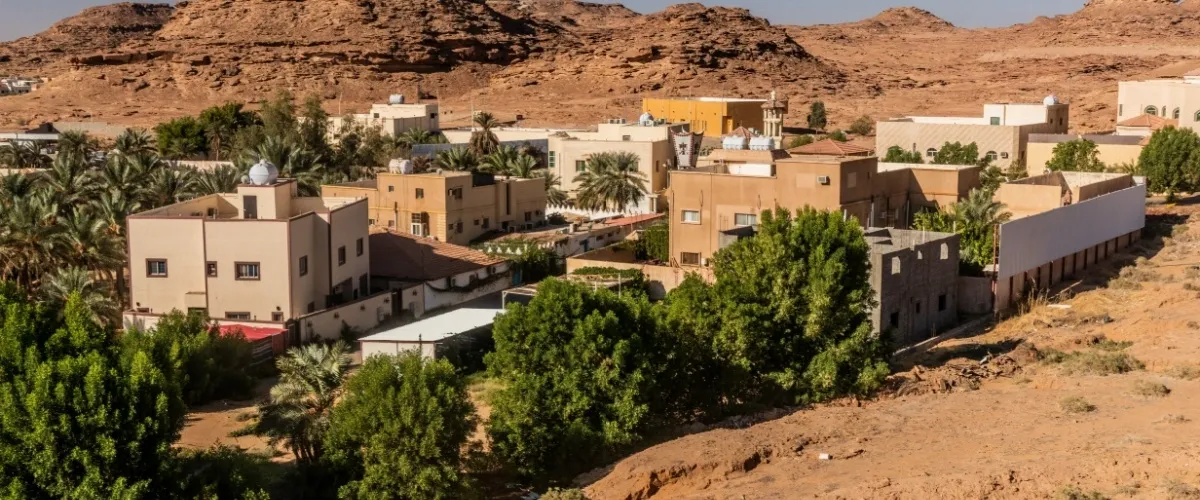
.webp)
.webp)
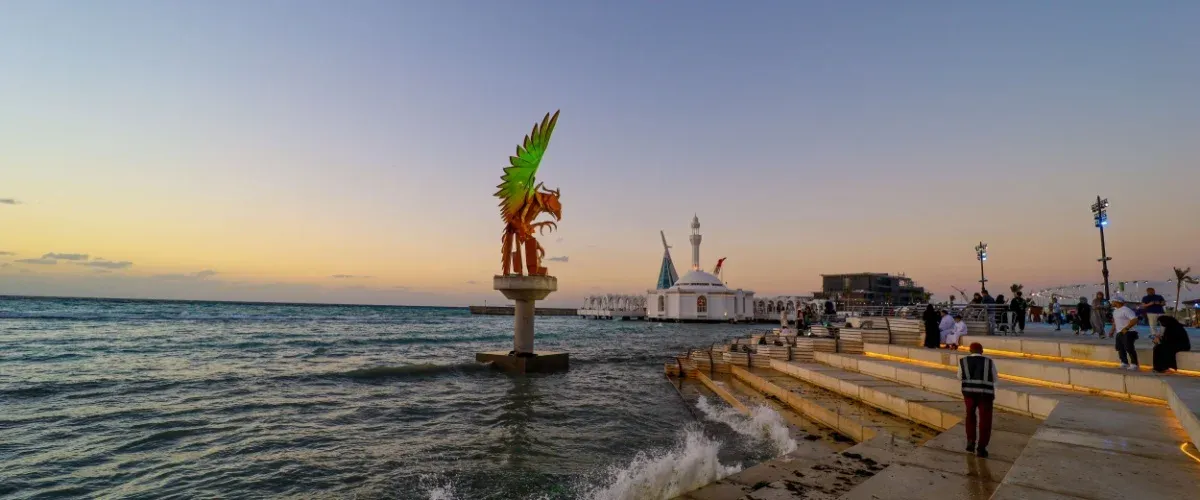
.webp)
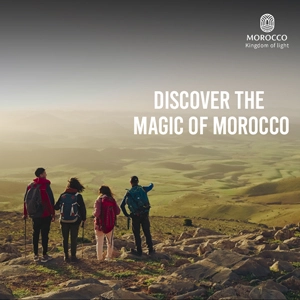
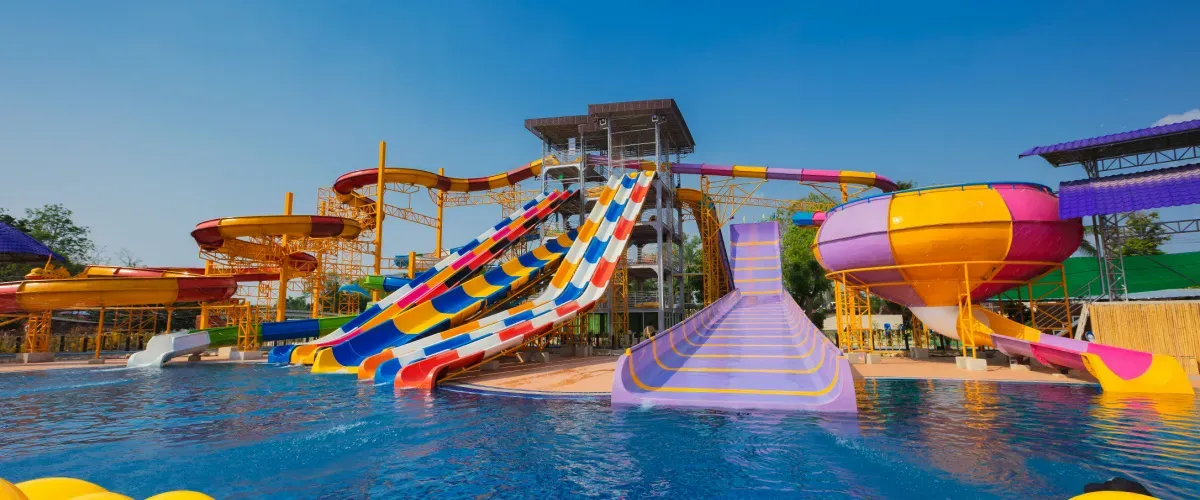
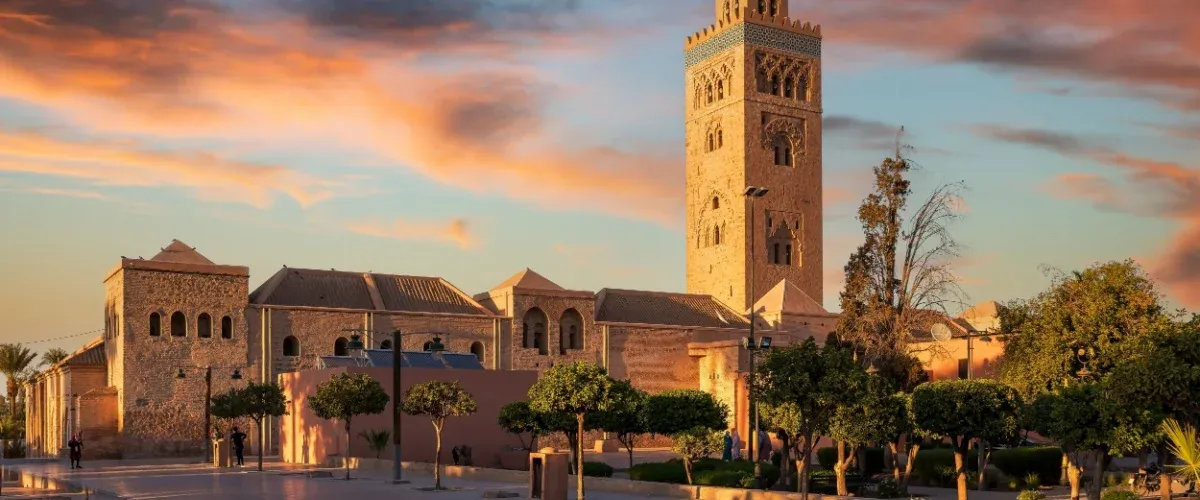

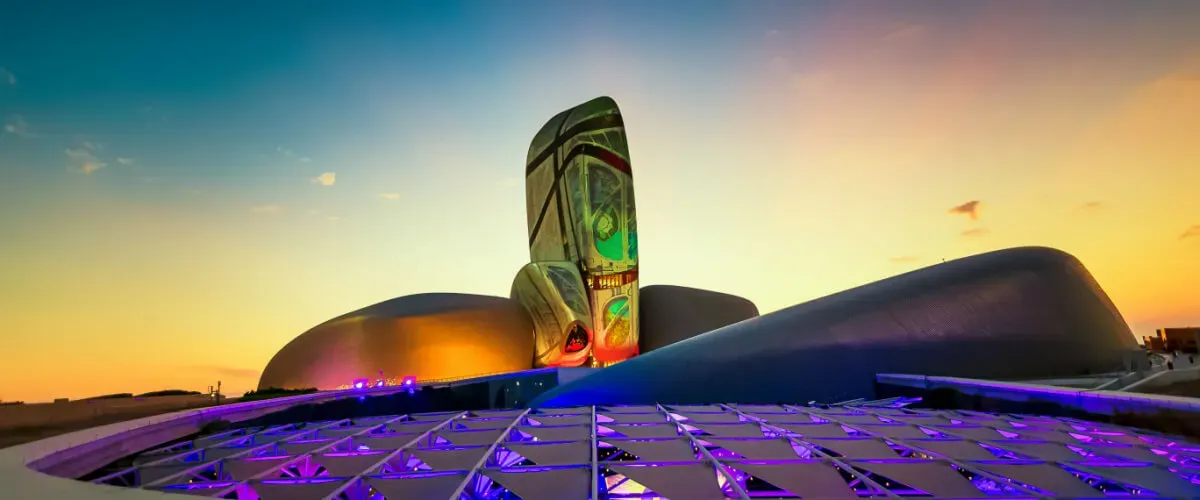
.webp)
